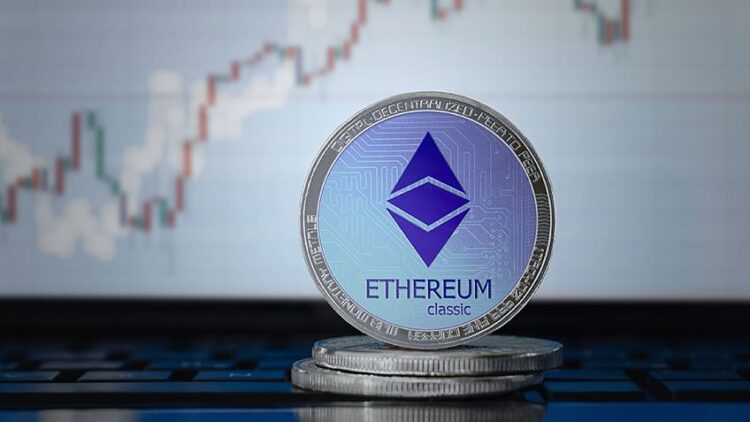Stepping into the realm of digital finance brings forth a world of innovation and promise, unfurling before our eyes. Among the myriad cryptocurrencies, Ethereum has forged its own formidable path, becoming an entity much more than just a currency – it’s a platform, an ecosystem, and a revolution in digital finance. This article will take a deep dive into why Ethereum trading is shaping the course of financial history and how its significance will only continue to surge in the future.
Page Contents
Exploring the Advantages of Trading

Source: ukbusinessblog.co.uk
Ethereum, built on the foundation of blockchain technology, offers a host of advantages that make it a unique asset to trade. Beyond its impressive market cap and appreciating value, trading introduces the opportunity for investors to interact with a rapidly expanding digital economy. The decentralized nature of this digital asset removes the need for intermediaries, offering reduced transaction costs, and the possibility of round-the-clock trading.
An aspect to behold within the Ethereum sphere is the application of decentralized finance (DeFi). DeFi platforms running on ETH provide a new frontier for digital finance, enabling individuals to lend, borrow, and earn interest on their balance. This expands the possibilities of trading, allowing traders not only to speculate on price movements but also to become an active part of a global decentralized banking system. In case you want to join in and start trading, you will need a strong service. Check out immediate-profit.de.
Impact on Traditional Financial Systems
Existing financial frameworks are witnessing the transformative influence. As a borderless, decentralized, and programmable asset, it is redefining finance by providing opportunities for financial inclusivity and freedom. It enables secure, swift transactions across the globe, alleviating the often cumbersome, time-consuming, and expensive processes associated with traditional banking systems.
The Ethereum network’s capacity for tokenization is altering the landscape of asset management. A real-world asset, from a house to a painting, can be represented as a digital token on the blockchain, allowing for fractional ownership and improving liquidity. This is empowering a new generation of investors, democratizing access to investment opportunities previously confined to a wealthy elite.
The Role of Smart Contracts in Revolutionizing Finance

Source: simplilearn.com
Smart contracts, at the heart of Ethereum’s functionality, have ignited a seismic shift in financial operations. These self-executing contracts encode the terms of an agreement and automatically execute transactions when the predefined conditions are met. This reduces the need for trust and eliminates the cost of enforcement, contributing to greater efficiency and transparency in financial transactions.
Continuing along this vein, the proliferation of Decentralized Applications (dApps) built on Ethereum’s smart contracts offers a diverse range of financial services. From lending platforms to decentralized exchanges, these applications are dismantling barriers, providing financial services to unbanked communities, and making the financial industry more inclusive and accessible.
Liquidity and Trading Volume
Ethereum boasts impressive liquidity and trading volume, making it a viable option for active trading. Its strong liquidity means transactions can be conducted efficiently, and slippage is minimized even for substantial orders. High trading volume also contributes to the overall market stability, reducing the risk of price manipulation.
The vast array of dApps built on Ethereum only adds to its trading volume. Each interaction with a dApp requires the transaction to be processed using Ether, the native token of Ethereum. This constant demand for Ether boosts its trading volume, further enhancing liquidity and making it an attractive option for both retail and institutional traders.
Addressing Challenges and Risks
While Ethereum trading presents numerous advantages, it doesn’t come without its share of challenges. The volatile nature of the crypto market can lead to substantial price swings, making risk management crucial for traders. Careful consideration should be given to position sizing, leverage, and stop-loss orders to mitigate potential losses.
Security threats pose another challenge in Ethereum trading. Cybersecurity measures need to be robust, given the irreversible nature of transactions on the blockchain. Users must ensure secure storage of private keys and consider hardware wallets for additional protection. Awareness of phishing attempts, smart contract bugs, and fraudulent dApps is also necessary to safeguard one’s assets.
Regulatory Environment and Future Outlook

Source: cbsnews.com
The regulatory landscape is continually evolving. Different countries have varying stances, with some embracing the potential and others imposing strict regulations. Traders must stay abreast of these changes and understand how they may impact their trading strategy. A thorough understanding of regulatory requirements can prevent potential legal complications and ensure seamless trading.
The future of Ethereum looks promising. With the implementation of Ethereum 2.0 on the horizon, scalability and energy efficiency issues are set to be addressed, potentially driving an increase in adoption. The continued development of DeFi and NFT platforms, along with the proliferation of dApps, only serves to fortify its position in the digital finance landscape.
Ethereum trading is not just about buying low and selling high. It requires understanding and navigating the intricacies of the ecosystem and the broader digital finance landscape. Becoming well-versed in smart contracts, DeFi platforms, and tokenomics can provide traders with a deeper understanding and help them identify lucrative trading opportunities.
The dynamic nature of the Ethereum landscape means that it is always changing, creating new possibilities and challenges. Traders need to remain adaptable, regularly updating their knowledge and adjusting their strategies in line with market trends and technological advancements. Being proactive in understanding emerging technologies like Layer-2 solutions or interoperability protocols can give traders a significant edge.
Opportunities and Potential for Investors
For those willing to dive deep and explore, Ethereum presents a multitude of opportunities. From simple trading of Ether to participating in yield farming on DeFi platforms, the ways to grow one’s investment are abundant. Additionally, as Ethereum continues to mature, the tokenization of assets may provide new avenues for investment, unlocking trillions of dollars worth of illiquid assets.
Ethereum trading is not just about immediate returns, but it also opens up the potential for long-term gains. With the ongoing development of the Ethereum ecosystem, the value of Ether could appreciate significantly over time. While there is an element of risk inherent in any form of trading, the potential rewards that it offers are monumental, promising a robust future for investors.
Final Words
As we navigate the digital seas of the twenty-first century, Ethereum stands as a beacon of promise, leading the way toward a decentralized future. From revolutionizing traditional financial systems to offering a multitude of trading opportunities, Ethereum has established itself as a major player in digital finance. Trading is not merely an investment strategy – it is participating in the reshaping of the financial world. As we continue to explore this transformative landscape, Ethereum will undoubtedly remain at the forefront of digital finance, charting the course for new and exciting possibilities.




